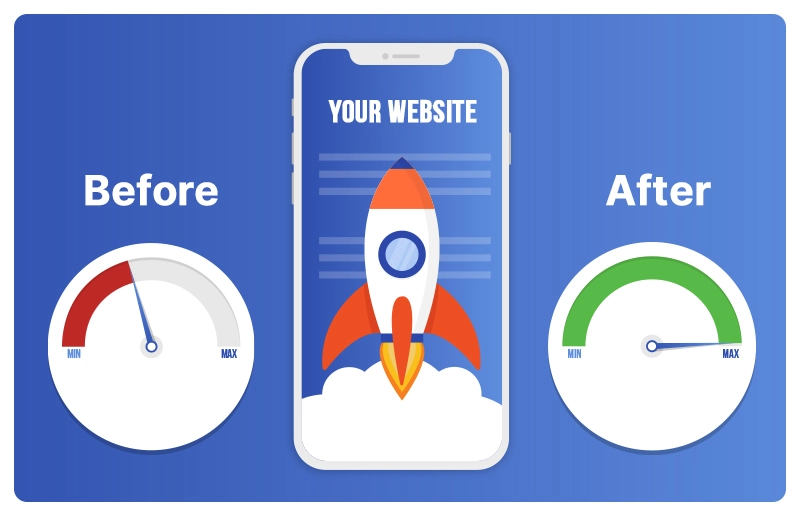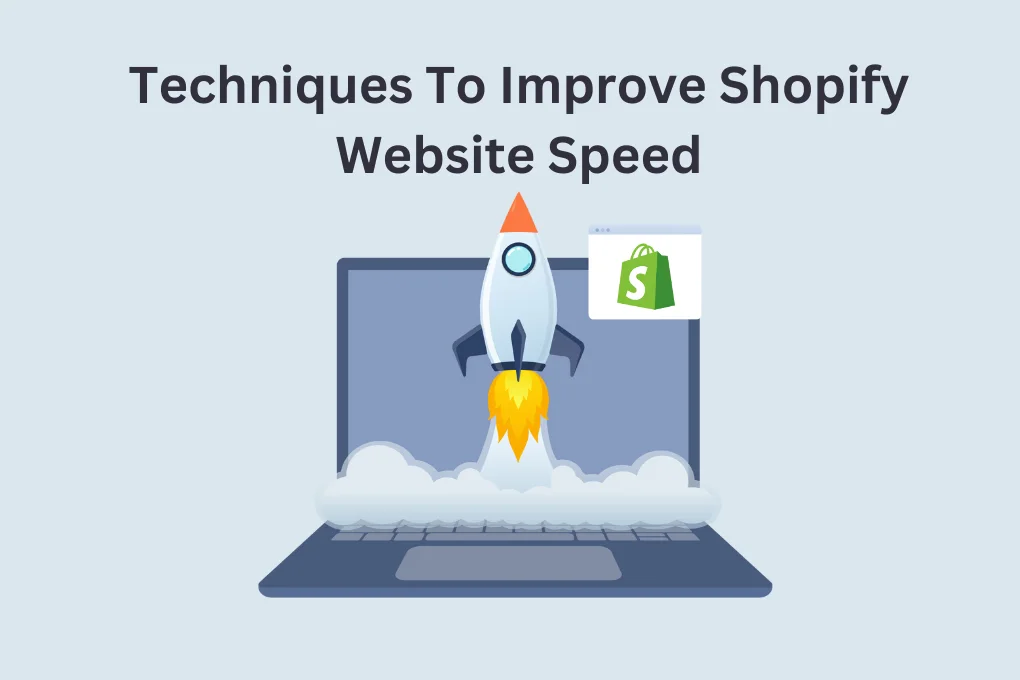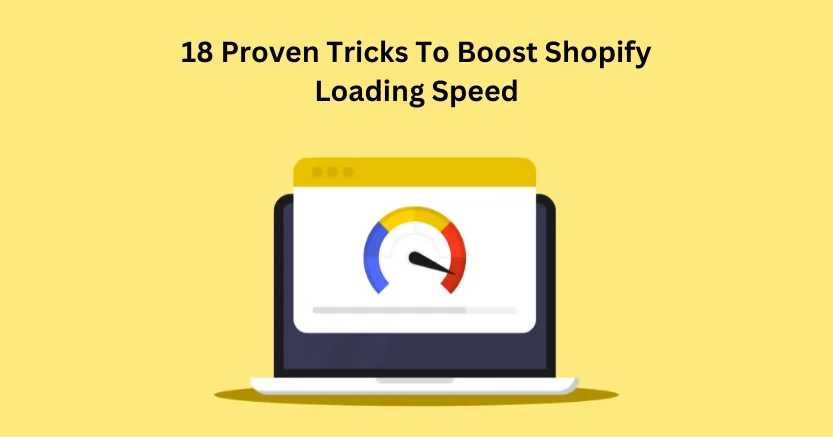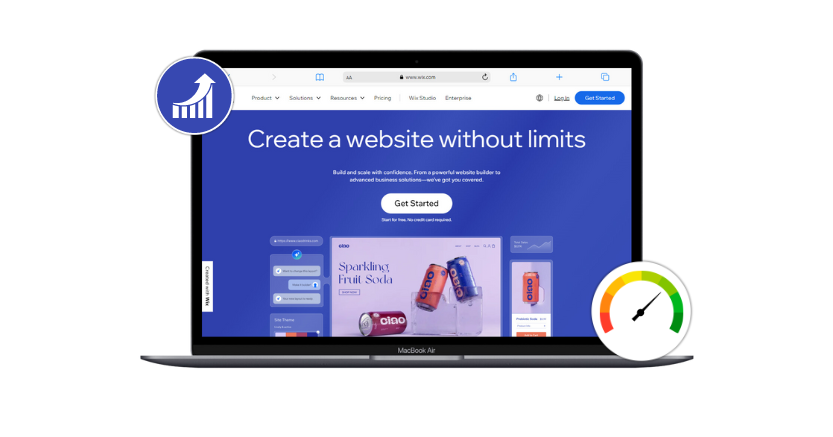1. Introduction
In today’s fast-paced digital world, website speed is an extremely important factor that can make or break your online business. A slow website speed can cause frustration for your customers and can have a negative impact on your search engine rankings, leading to lost traffic and revenue. That’s why it’s essential to optimize your website speed to ensure a fast and responsive experience for your users.
In this quick step-by-step guide, we will cover all the essential aspects of website load time optimization, from understanding what page speed is and why it’s important to the factors that affect website speed, testing your website speed, and implementing quick and simple steps to improve your web page speed. So, let’s get started!
2. What is Page Speed?
Page speed refers to the time it takes for a web page to load completely and it is an essential factor for website owners, as a slow-loading website can lead to a bad user experience and a huge reduction in traffic. Page speed can be measured using various tools, including Website Speedy, Google PageSpeed Insights, and GTmetrix, which analyze the website’s performance and provide suggestions for improving its loading speed.
These tools evaluate various aspects of a website, such as server response time, image optimization, and browser caching, among others. By utilizing a website speed optimization tool, website owners can ensure that their pages load quickly and efficiently, enhancing the user experience and improving their website’s overall performance.

Want to read this blog offline?
No worries, download the PDF version
now and enjoy your reading later…
 Download PDF
Download PDF 3. Why Is Your Page Speed So Important?
Your page speed is incredibly important for a variety of reasons. First and foremost, it directly impacts the user experience of your website. If your page takes too long to load, users are likely to become frustrated and leave your site. This can lead to a higher bounce rate and lower engagement, ultimately hurting your website’s overall performance. In addition to impacting user experience, page speed is also a key factor in search engine optimization (SEO). Google has stated that page speed is a ranking factor in its algorithm, meaning that faster-loading pages are more likely to rank higher in search results and this further can lead to increased visibility and traffic for your website.
Finally, page speed also impacts your website’s conversion rates. A slow-loading page can lead to a higher bounce rate and lower conversion rates, as users are less likely to wait around for your page to fully load before taking action.
4. Factors Affecting Website Speed
Server-Related Factors
The first factor that affects website speed is related to the server. The server is the computer that hosts your website and serves it to users over the internet. If your server is slow, your website will also be slow. The following are some server-related factors that affect website speed.
Web Host: The web host is the company that provides the server for your website. The quality of the web host can have a significant impact on website speed. If your web host is slow or unreliable, your website will also be slow and unreliable. Therefore, it is essential to choose a reliable web host that can provide fast and secure servers.
Server Location: The location of your server can also affect website speed. If your server is located in a different country or region from your target audience, it can result in slow website speed. This is because the distance between the server and the user can cause latency, which can slow down website load times. Therefore, it is recommended to choose a server location that is close to your target audience.
Server Response Time: Server response time is the time it takes for the server to respond to a request from the user’s browser because if the server response time is slow, it can result in slow website speed. Therefore, it is essential to ensure that your server response time is fast by optimizing your server configuration and reducing server load.
Website-Related Factors
The second factor that affects website speed is related to the website itself. The design and development of your website can also impact website speed. The following are some website-related factors that affect website speed.
Image Size and Compression: Large images can significantly slow down website speed. Therefore, it is essential to optimize your images by reducing their size and compressing them. You can use image editing software to reduce the size of your images without compromising their quality. You can also use compression tools to compress your images and reduce their file size.
Code Optimization: The code of your website can also affect website speed. If your code is bloated and inefficient, it can slow down website speed. Therefore, it is essential to optimize your code by removing unnecessary code, reducing the number of HTTP requests, and minifying your CSS and JavaScript files.
Content Delivery Network (CDN): A Content Delivery Network (CDN) is a network of servers that are distributed across the globe and that store copies of your website’s content and serve it to visitors that are closest to them. This can significantly improve website speed, as it reduces the distance between the server and the user.
Caching: Caching is the process of storing frequently accessed website content in the user’s browser or on the server. This can significantly improve website speed, as it reduces the number of requests that need to be made to the server. You can use caching plugins or tools to implement caching on your website.
Network-Related Factors
The user’s network and internet connection are significant factors that affect website speed. A slow connection can cause delays in loading website content, which can lead to frustration for the user. The following are some of the network-related factors that can affect website speed:
User’s Location: The location of the user’s computer or device can affect website speed. The farther away the user is from the server, the longer it takes for website content to load. For instance, if a website’s server is located in the United States, users who are located in Europe or Asia may experience slower website speeds.
Bandwidth and Latency: Bandwidth refers to the amount of data that can be transmitted over a network in a given time. Latency refers to the time it takes for data to travel from the user’s computer to the server and back. A slow bandwidth and high latency can significantly affect website speed.
Device Type and Browser: The user’s device and browser can also affect website speed. Older devices and browsers may not be able to handle the latest website technologies, leading to slower load times.
5. Tools to Test Website Speed:
Testing website speed is crucial to ensure that your website is optimized for users. One of the most popular tools available is Website Speedy Tool. This free tool allows users to enter their website’s URL and receive detailed information about the speed and performance of their website. Website Speedy Tool provides a variety of metrics, including page speed, page size, and the number of requests made by the website. This information can be incredibly useful in identifying areas where a website can be optimized for speed.
To use Website Speedy Tool, simply navigate to the website and enter your URL in the provided space. Once you click the “Analyze” button, the tool will begin analyzing your website’s speed and performance. The tool provides a detailed report, including a breakdown of the various elements on the page, such as images and scripts, as well as recommendations for improving the website’s speed.
Measure Your Current Web Page Speed
One of the most significant advantages of measuring your website speed is the ability to record and compare your scores before and after optimizing your website. This allows you to track the impact of any changes you make and ensure that your website is always running at its best. For example, if you compress your images or reduce the number of HTTP requests, you can compare your website speed scores before and after these changes to see the impact they have on your website performance.
Moreover, it is essential to measure your website speed regularly to ensure that your website is always running optimally. With the ever-changing landscape of the web, there are always new optimization techniques and tools being developed. Measuring your website speed regularly can help you stay up to date with these changes and ensure that your website is always at the forefront of speed and performance.
6. Quick and Simple Steps To Improve Your Website Page Speed
Here are some quick and simple steps to improve your website’s page speed.
Step 1: Optimize Images

Images play a significant role in web design, but they can also slow down your website’s loading time. Large, high-resolution images can take a long time to load, resulting in a slower website. To optimize your website’s images, follow these tips:
1. Compress Images: Compressing images can reduce their file size without affecting their quality. You can use online tools such as TinyPNG or JPEG Optimizer to compress your images before uploading them to your website.
2. Use the Right File Type: JPEGs are best for photographs, while PNGs are best for graphics and logos. Using the right file type can reduce the file size of your images and improve your website’s loading time.
3. Resize Images: Resizing images can reduce their file size without sacrificing their quality. Use an image editing tool such as Adobe Photoshop to resize your images to the appropriate dimensions before uploading them to your website.
There are also several tools and plugins available to help you optimize your website’s images, and these tools can automatically compress and resize your images, making the process much simpler.
Step 2: Minimize HTTP Requests

HTTP requests refer to the number of times a user’s browser requests files from your server. The more requests your website has, the longer it will take to load, and to minimize HTTP requests, follow these tips and easily make your website run faster.
1. Combine Files: Combining your CSS and JavaScript files can reduce the number of HTTP requests on your website. Use a tool such as WP Minify or Autoptimize to combine your files automatically.
2. Reduce the Number of Elements on a Page: The more elements (such as images, videos, and ads) on a page, the longer it will take to load. Simplify your website’s design by reducing the number of elements on each page.
Numerous tools and plugins are at your disposal to assist in reducing HTTP requests. They possess the capability to automatically merge your files, simplifying the process and resulting in a decrease in the number of HTTP requests on your website.
Step 3: Enable Browser Caching

Browser caching is the process of temporarily storing website files (such as images and scripts) on a user’s device so that they don’t have to be downloaded every time a user visits your website. This can dramatically reduce page load times for returning visitors.
Enabling browser caching is easy and can be done using various website optimization tools. These tools allow you to set the cache expiration time for different types of files and even let you minify and combine files to further improve page speed.
Step 4: Minimize Server Response Time

Server response time is the amount of time it takes for a server to respond to a user’s request as a slow server response time can significantly affect page speed, especially for those websites that have lots of content.
To minimize server response time, there are a few things you can do. First, consider upgrading your hosting plan to a faster server. This can significantly improve server response time and overall website performance.
Another way to minimize server response time is to optimize your database queries. This involves identifying slow queries and optimizing them to reduce their execution time. Tools like Query Monitor can help identify slow queries and provide recommendations for optimization.
Finally, you can leverage browser caching to reduce server response time. By storing frequently requested files on a user’s device, you can reduce the number of requests your server has to handle, which can improve server response time.
The Core Web Vitals will soon be updated with a new metric called INP, slated to substitute FID by March 2024. In order to aid site owners and developers in preparing for this change, Search Console will incorporate INP into its Core Web Vitals report later this year. By the time INP takes over FID in March 2024, the Search Console report will no longer display FID metrics and will instead utilize INP as the new measure for assessing responsiveness.
Step 5: Minify and Compress Files

The size of your website’s files can have a significant impact on page speed. Large files take longer to load, which can lead to slower page speed. This is especially true for JavaScript, CSS, and HTML files. Minifying and compressing these files can reduce their size and improve your website’s page speed.
There are many tools available that can help you minify and compress files. Moreover, these tools are easy to use and can significantly improve your website page speed.
To minify and compress your website’s files, follow these simple steps:
1. Back up your original files in case something goes wrong.
2. Install the appropriate tool for the type of file you want to minify or compress.
3. Open the tool and select the file you want to minify or compress.
4. Follow the tool’s instructions to minify or compress the file.
5. Save the minified or compressed file and replace the original file on your website.
Step 6: Use Content Delivery Networks

A content delivery network (CDN) is a network of servers located around the world that work together to deliver content to website visitors. When a visitor accesses your website, the CDN will automatically serve the content from the server that is closest to them and this will reduce the distance the content has to travel, which can lead to faster page speed.
Using a CDN can improve your website’s page speed in several ways:
- Reduced latency: By serving content from a server that is closer to the visitor, the CDN can reduce latency and improve page speed.
- Reduced bandwidth usage: Because the CDN serves content from multiple servers, it can distribute the load and reduce bandwidth usage on your website’s server.
- Improved scalability: CDNs are designed to handle high levels of traffic, which can improve your website’s scalability and prevent it from crashing during peak periods.
Step 7: Lazy Loading

Lazy loading is a technique that delays the loading of non-critical resources such as images, videos, and scripts until the user needs them. This means that when a user lands on your website, only the essential resources will be loaded, and the rest will be loaded as the user scrolls down the page.
How does lazy loading improve page speed? By delaying the loading of non-critical resources, lazy loading reduces the initial load time of a page. This, in turn, reduces the time it takes for the page to become interactive and improves the user experience. Moreover, lazy loading can also reduce the number of HTTP requests, which is another factor that affects page speed.
Implementing lazy loading is relatively easy. Here are the steps:
Step 1: Identify the resources that can be lazy-loaded, such as images, videos, and scripts. Step 2: Install a lazy loading plugin. If you are using WordPress, there are several free and paid plugins available, such as Lazy Load by WP Rocket and BJ Lazy Load. Step 3: Configure the plugin settings in accordance with your preferences and most plugins allow you to specify which resources should be lazy loaded and on which pages they should be lazy loaded.
That’s it! By implementing lazy loading, you can significantly improve your website’s page speed and user experience.
Step 8: Reduce the Number of Plugins

Plugins are a great way to add functionality to your website without having to code everything from scratch. However, too many plugins can slow down your website. Each plugin you install adds extra code to your website, which can increase the page size and the number of HTTP requests.
To reduce the number of plugins you use on your website, follow these tips:
Tip 1: Evaluate the plugins you are currently using and determine which ones are essential and which ones are not. Consider removing the non-essential plugins.
Tip 2: Look for plugins that offer multiple functionalities. For example, instead of using separate plugins for social media sharing and contact forms, use a plugin that offers both functionalities.
Tip 3: Consider coding custom functionality instead of using plugins. This may require some technical expertise, but it can significantly reduce the number of plugins you use and improve your website’s page speed.
Faster Load Times, Fatter Wallets. Let’s Upgrade!
Boost Website Speed Now7. Monitor and Maintain Web Page Speed
In today’s digital age, web page speed is everything. It can make or break the success of your website and, ultimately, your business. Visitors expect fast and responsive web pages, and if they don’t get it, they’ll quickly move on to the next website. That’s why it’s important to monitor and maintain your web page speed regularly.
Monitoring your web page speed is also essential, as it allows you to identify any issues or errors that may be slowing down your website. This can include broken links, outdated plugins, or slow server response times. By identifying these issues early on, you can fix them before they become a bigger problem.
One of the best ways to monitor your web page speed is by using a tool like Website Speedy. This tool allows you to test your website’s speed and performance and provides you with detailed information on what’s causing any slow-downs or errors. It’s easy to use and provides you with real-time data, so you can quickly identify any issues and fix them. Whether you are having a custom-built store or saas base such as Shopify, our Shopify speed optimization tool fixes all core web vital issues and optimize website speed and improve your store’s user experience and conversions.
Here are a few things that the Website Speedy tool does to ensure your website stays fast and responsive.
1. Optimize images: Large images can slow down your website, so the tool makes sure to optimize them before uploading them to your website. Additionally, this Website Speedy tool compresses your images without losing quality.
2. Minimize HTTP requests: Every time a user loads your website, their browser sends a request for each element on the page, such as images, scripts, and stylesheets. By minimizing the number of HTTP requests, the tool speeds up your website. You can also do this by combining multiple CSS and JavaScript files into a single file and using CSS sprites for images.
3. Use a content delivery network (CDN): A CDN is a network of servers located around the world that store and deliver your website’s content. By using a CDN, you can reduce the distance between your website and your visitors, which can help to speed up your website. Moreover, you can do this in a better way using the Website Speedy tool.
4. Update plugins and software: Outdated plugins and software can slow down your website and leave it vulnerable to security threats. So, the Website Speedy tool makes sure to keep everything up to date to ensure your website stays fast and secure.
8. Conclusion
In conclusion, we have covered everything from the importance of website speed to the essential steps to boost your website speed in this guide. By following these steps, you can significantly improve your website’s loading time, resulting in better user experience and higher search engine rankings. We cannot stress enough the importance of having a fast-loading website in today’s digital age. Slow-loading websites can put off potential customers and hurt your search engine rankings. Therefore, we highly encourage you to implement the tips and tricks covered in this guide to optimize your website’s speed.
Additionally, if you’re looking for an effective website speed booster, Website Speedy is the perfect solution. So, what are you waiting for? Start optimizing your website speed today and gain a competitive edge over your competitors.
June 2, 2023
Leave a Comment
















































